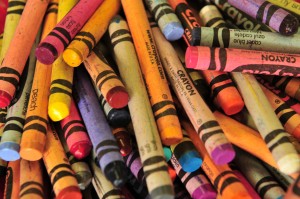Recently, I’ve started looking into grant applications for writers. Nearly all of these require an already-produced body of work, which is unsurprising. What I hadn’t thought about, but what is also quite logical, is the inclusion of an artist statement.

image courtesy of geekphilosopher.com
Most of the information that I’ve been able to find on artist statements focuses on or pertains to visual artists, such as the scaffolding/thought process that Molly Gordon puts together on her website here. I thought hers was an excellent exercise. My only quibble, if you can call it that, is my wish to find something like this tailored for writers. Molly’s outline contains questions about the medium the artist uses, or what tools, or the part color plays in the work.
Despite the fact that I am no visual artist, I went through the exercise myself, and highly recommend it. It helped me open up my mind and explore my thoughts and feelings on my art. (Personally, I have to fight a tendency to begin editing my work almost as soon as I have a sentence or two down on paper or on the screen, which immediately puts up creative blocks and walls in my work before it gets anywhere.) As I did so, I toyed with the idea of re-purposing Molly’s outline for a writer. For example, “selecting materials” pertains obviously to the visual arts: acrylic, oils, stone, textiles, etc. For a writer, it would make more sense to think about what form or genre or type of writing they are focusing on: short stories? creative nonfiction? poetry? novels? memoir? How does the kind of writing affect its structure? “Tools” may be the computer or longhand for a first draft, books as reference or inspiration, note-organizing software, and so on.
Then I thought, if something like that could help me, surely others could benefit from it also. And: surely something like this already exists.
I began searching for an online resource like Molly’s for writers, and I’m still looking. Maybe it’s a search-engine ranking thing, and the search results are keyed into visual arts; perhaps there is something way down in the search rankings that refers to writers, and if so, it’s a crying shame that it’s so well hidden.
Maybe there’s a bias towards explaining the artistic statement to non-writers, because their area of focus has nothing to do with words.
Maybe I’m just not looking in the right place. (Always possible.)
But maybe it doesn’t even matter. Why should that stop me from putting together my own outline or suggestions for a writer’s artist statement? The fact that one novel exists doesn’t stop the lot of us from writing more. The fact that one short story got written doesn’t mean none of us can ever write another. Talk about throwing up obstacles to creativity.
In Edward Burger’s recent article about the importance of unstructured thinking, he talks about organizing our reactions to ideas into three categories: positive, negative, and interesting. The premise is that we judge an idea, and whether it is a failure, based on a previously conceived notion of what success is, despite the fact that some of the most revolutionary ideas were unintended and unforeseen consequences of something else that “failed.” For me, the artist statement definitely falls into the interesting category. I’m not sure exactly where it’s going to go, and it might end up someplace else (apologies to Yogi Berra).
So in my next post, I’ll share what I’ve come up with — a starting point, a series of ideas around the construction of an artist statement for writers. Your thoughts, and your friends’ thoughts (and the thoughts of your cats and dogs) are welcome. (Just no hairballs, please.)
In parallel with this, I am still on the hunt for resources, exercises, templates, or examples of writer’s artistic statements already available. If you have any links or suggestions, please shoot me an email through this website or leave the information in the comments. The more sources, the better. I’d like to put them together in a follow-up post or otherwise organize them under a resources page (TBD) so that they can benefit other writers.
So let’s get to it! What do you think? Got any ideas about artist statements for writers? I’d love to hear feedback from visual and other artists, too.

I recommend Gigi Rosenberg’s book, “The Artist’s Guide to Grant Writing.” It has a great section on artist statements.
Thanks so much for sharing that resource, Judith!
I am in the middle of writing my artistic statement. I came across your post here and wondered if you ever found a template that worked well.
Hi Elaine,
The closest I’ve come is in the fantastic book, The Profitable Artist, from the New York Foundation for the Arts. This is a great resource for artists on many levels, including the artist statement. Personally, I am always on the lookout for the statements of other writers and artists, to see if they are doing something that would work for me. And my big focus when I craft one is bringing the beginning & ending of the statement together. That is, the end should close the loop the beginning starts. This makes for a satisfying reading experience (and hopefully a good impression on the judges!). I hope that helps.